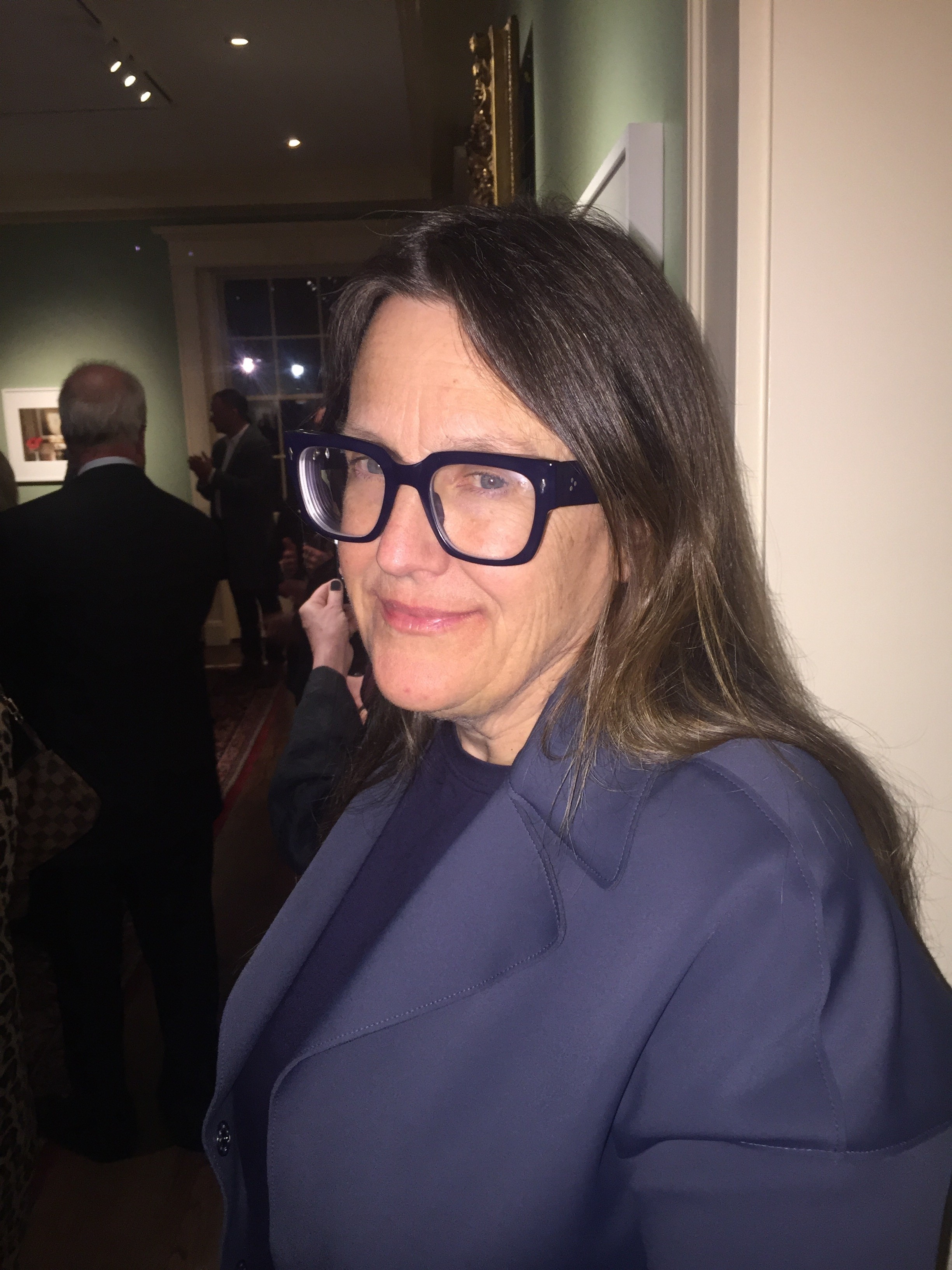When Jeffrey Nesin packed up his bow ties and returned to New York in 2010, The Commercial Appeal wrote a glowing farewell to the Memphis College of Art’s long-serving president. Nesin had led the school for 19 years, more than doubling enrollment during his tenure, engaging major funders, and greatly expanding MCA’s footprint outside of its Overton Park facility. According to the CA, Nesin was leaving the school in “a sweet spot … a happy place where it can continue to grow.”
It was a defining moment for MCA and, with financial support from the Hyde Foundation, the occasion was marked by the move of the school’s postgraduate program into a beautiful old building in downtown’s South Main arts district. The building had been renovated and rebranded as the Nesin Graduate School in honor of MCA’s departing rainmaker.
 School of Visual Arts
School of Visual Arts
Jeffrey Nesin
Two years later — and amid a virtually unreported-on struggle to retain academic accreditation — the school was spending $700,000 more annually than it was taking in, and MCA’s newly installed president, Ron Jones, was forced to declare a state of financial exigency and ask the board of trustees for special powers to eliminate programs and terminate contracts. Jones further announced that MCA would begin a process of selling off its private art collection.
“An institution with significant debt and insufficient revenue cannot move forward if all the energy is focused upon raising money to make ends meet,” Jones said.
Three years after the declaration of financial exigency — and only five years after the grad school’s grand opening — MCA sold its South Main building and reconsolidated its graduate and undergraduate programs. Two years later, on October 24th, 2017, the big blow came: After 81 years of “teaching people the language of art and craft,” as stated in the school’s original 1936 catalog, MCA’s board announced the school would end student recruitment, effective immediately, and prepare to close. Reasons cited included declining enrollment, overwhelming real estate debt, and no viable long-term plan for financial sustainability.
Art by the Numbers
So, what happened to that “sweet spot”? How did MCA’s “happy place” get so sad, so fast? Did MCA overextend its resources in the early 2000s, thereby becoming a victim to the circa-2008 global banking and real estate crisis? Or is the college just part of a trend, one of the many small private institutions closing around the country, due to dropping enrollment and rising tuition costs.
The short answer is “yes, to all that,” but it’s complicated. The seeming abruptness of MCA’s decision is perhaps more directly tied to a catastrophic bottoming out of enrollment, and what may be interpreted as a final no-confidence vote by members of Memphis’ philanthropic community. The die was cast when privately made promises to fund the college through a period of physical and programmatic right-sizing were rescinded late in the game, with no safety nets or back-up plans in place.

MCA interim president Laura Hine explains: “I would say, within the major-donor funding community, there was no stone left unturned. Historically, our alumni are not wealthy people, and they have been asked to give and give. You can’t look to them to provide the kind of support this institution needs because the funding capacity is just not there. … And even if we could have raised enough money to get through a year? Now we’ve admitted new students and have no funding commitments that will sustain the institution over a longer period of years. There is no private college of any kind that doesn’t rely on its donors to survive, and the major-donor community here in Memphis has been extraordinarily generous to this college over a very long period of years. But efforts to line up multi-year commitments just didn’t materialize.”
MCA’s closing announcement felt abrupt because it was abrupt. Although major changes were anticipated by faculty and staff, none of those plans included total shutdown. Recorded minutes from a September 5th faculty meeting listed only three potential options going forward: a merger with another area school; undertaking the build-out of the school’s design program without compromising other divisions; or transforming MCA into an arts learning center with courses available to other Memphis schools for transfer credits.
“I regret that a lot of people, alumni, and friends of the school feel they didn’t get sufficient warning of the situation,” says long-serving MCA trustee Cecil Humphreys. “I think they feel kind of blindsided, betrayed. This was a long time coming, but when it happened, it happened very quickly.
“We thought we’d arranged funding to give us a couple more years,” Humphreys continues. “When that funding was withdrawn, the decision had to be made quickly, because the nature of the school’s obligations to its students. When you admit them, you’ve got to have a reasonable belief that you’re going to be around to teach them for four years.”
Hine had no idea she’d be tasked with closing the school when Ron Jones retired in February, and in an extensive interview, she restates a bit of conventional wisdom that’s been buzzing around the internet since the bad news broke: “Everybody thinks we should just sell everything south of Poplar, eliminate our debt, and invest in Rust Hall.
“Well,” she adds, “that was the plan — go back to what we used to be. Go back down to a sustainable size. We couldn’t line up the commitments.”

Hine calls the college’s $6.9 million real estate debt “an albatross around this institution’s neck.” She describes a frustrating economic circumstance where even exceptional fund-raising doesn’t necessarily translate to sustainability, let alone the kinds of improvements you can show funders to illustrate where their money goes.
“We reduced debt by 31 percent,” Hine says, citing a better-than-average 2014/2015 giving season, and a painstaking process of debt consolidation. “We’d had multiple loans,” she says, “and the interest rates were pretty high.” An additional $200,000 in annual expenses were cut by outsourcing MCA’s IT department.
“That’s a lot of hard decisions,” Hine adds, describing a “fear-producing” environment where layoffs create anxiety every time management walks in the door.

MCA students at work

Head Hunting
Unfortunately for MCA, austerity measures, debt maintenance, and successful giving campaigns couldn’t keep pace with the school’s precipitous drop in enrollment.
“There’s been a fight for every head-count,” Hine says. “With the disappearance of the middle class, normal families don’t have the ability to pay tuition for fine arts and liberal arts schools. And you have other things that occur at the state level, like Tennessee making the first two years of community college free. It’s hard to say no to two free years of school, and that deals a blow to institutions like us.”
In 2010, as MCA reached peak expansion, the school had 444 students. In 2011, that number dropped to 433. Under MCA’s business model, 80 percent of the operating budget was derived from tuition and fees ($43,550 a year). Every lost student was a major blow, and losses kept piling up.
“We always strive for a freshman class of around 130,” Humphreys explains. “We budget for a class of about 100. This year’s freshman class was 66.” That’s nearly $1.5 million off budget, and almost $3 million less than the ideal. “It’s a lot,” Humphreys says.
In the spring of 2015, Jones set out to upgrade and modernize recruitment, bringing on an enrollment manager educated and previously employed by the University of Phoenix, a for-profit school offering online learning options and catering to nontraditional and older-trending students.
The faculty began to express concern that new directions in enrollment weren’t working, and in an October 2015 letter addressed to Jones, the “collective Faculty of Memphis College of Art” expressed what turned out to be prescient concerns about “a crisis situation with regard to recruitment and our recent experiences with the Admissions Office.” The letter continued: “If the situation is not improved immediately, we believe the enrollment for fall 2016 will be disastrous.”
“New changes in enrollment didn’t work out as we intended it to; that’s clear,” Hine says. “I think that the choice was made to bring in someone who had a very aggressive approach to enrollment. I think the short answer I’m willing to give is, I don’t think that person was a good cultural fit here, and I wasn’t shy about saying it.”
As MCA’s struggle to stabilize enrollment was failing, the school’s crushing real estate debt — which topped out at $11 million at its highest point — remained an issue. Not to mention $2.5 million in deferred maintenance on Rust Hall.


Making Art Work
When Nesin arrived in 1991, MCA didn’t own any property outside of Overton Park, and students had to find their own housing. Sarah Blackburn Klimek, president of MCA’s alumni association, wonders why the school changed its approach to student housing.
“It wasn’t difficult at all,” Klimek says. “We all lived on Belvedere [street], in those apartments. Belvedere was our dorm. My work-study job was matching freshmen with other freshmen for housing. They filled out questionnaires, and we would help them find places to live.”
MCA alum Dan Hayes tells a different story. Hayes studied illustration at MCA, took classes at Rhodes, and claims to have double-majored in poverty and theater. He describes the MCA housing situation as less than ideal. “Housing was a big negative for me,” he says, describing an experience that included dropout roommates and a too-tiny leased room. “My dad felt like he was throwing money away,” he says.
“Students wanted housing,” Humphreys says, explaining why MCA started buying properties in Midtown. “We don’t have a campus, and parents want their kids to live close to school and in places where they weren’t afraid, because they didn’t think it was safe.” Humphreys says the board was mostly supportive of the school’s efforts to develop safe and affordable student housing.
“The downtown graduate school, that’s a whole other topic,” Humphreys adds. “Not everybody agreed that was a good idea. It was made very attractive by a donor to the school, but I don’t think that’s worth getting into now.”
Within three months of Nesin’s arrival, MCA purchased and converted a pair of buildings on Poplar, just across the street from Overton Park. Nineteen years later, The Commercial Appeal described the school as “a minor real estate empire of 20 properties on Poplar, North Tucker, and North Rembert.” MCA also enlisted Askew, Nixon, Ferguson Architects to design a matching pair of $3 million, 26,000-square-foot apartment-style dormitories [on Barksdale], topped by glass-walled art studios.
Mori Greiner, who died in 1996, was MCA’s board chair when Nesin arrived. He’s been cited as “a key person” in early negotiations to obtain properties. In an unpublished history of the college created for MCA’s 60th anniversary, and supplied to the Flyer by the college, Nesin attributes the school’s rapid growth to Greiner, a past director of programming for WMC-TV, who, Nesin wrote, “was passionate about purchasing student residences, and spent a great deal of his own time searching the neighborhood for suitable properties.”
“You have to move things around and be a mini-mogul,” Nesin told The Commercial Appeal as he prepared to leave for New York at the end of his Memphis tenure. “I didn’t know this came with the territory at first, and I had to learn about it little by little.”
Downtown Detour
In 2010, MCA closed on a $400,000, 48,000-square-foot warehouse located at 477 S. Main. The school spent an additional $2.5 million to transform the building into the Nesin Graduate School, which housed the school’s art education program and programs in studio art and photography.
MCA’s grad school opened around the time the Cecil C. Humphrey School of Law moved into its new digs on Front Street and the Visible Music College acquired a downtown property on Madison.
Richard Florida’s hugely influential 2004 book The Rise of the Creative Class had become an urban development Bible, and the transformation of downtown into a free-range campus was regarded as exactly the kind of development that would help Memphis attract and retain “creatives” — the most desireable of all demographics.
“There was an expansive vision that, frankly, just didn’t materialize,” Hine says. The Nesin School was supposed to bring 100 students into the South Main arts district. There were 31 MFA students and 21 art education students downtown when MCA shuttered its South Main satellite, which had become controversial because graduate students were less available to undergraduates and farther from art supplies and materials only available in Midtown.
“We looked at the operational expense associated with having a building that far from Overton Park,” Hine says. “It was about a $230,000-a-year expense. We had to operate a shuttle back and forth, and between that and the cost of security down there, a decision was made to sell the building.” MCA still owed $500,000 on the building, plus an additional $500,000 expense to transform a number of Midtown properties into studio space for dislocated MFA students.
The End Game
Can MCA be saved? Hine doesn’t seem very optimistic, but believes a bigger endowment would go a long way toward solving the seemingly unsolvable problem. Even in the hardest of times, the school never dipped into the corpus of its $4.7 million endowment.
“A $30 million endowment would make a huge difference,” Hine says.
Humphreys has a somewhat more positive outlook. “Some of us are hoping and praying for a miracle,” he says. “I was always hoping that [major] donors would reach the conclusion that maybe the college won’t be self-sufficient,” he says. “Maybe we need the kind of annual support that every other art entity in the city needs. The Symphony’s not self-sufficient. The Opera’s not self-sufficient. Was there ever a possibility we could start thinking about the College of Art in the same way?”
So what does it mean for the students and teachers when a college begins the process of shutting down? Because many of MCA’s fine arts credits don’t translate easily to other academic environments, students who’ve attended the longest will face the greatest challenges transferring credits, should they choose to attend another school instead of continuing on through the teach-out program. To that end, on November 9th, 25 colleges entered into an agreement with MCA to accept the maximum number of student credits.
“If you’re asking me, ‘Do our students want to leave?,’ the answer is no,” Hine says. “There are some students who are sophomores or juniors who may go ahead and move on to another school, but we don’t really anticipate that.”
Faculty tenure was eliminated at MCA in 1981 and replaced by a rolling contract system. Hine says decisions regarding faculty retention will be made based on student need, but will faculty want to stay at an institution in hospice care?
MFA director and acting vice president of academic affairs, Haley Morris-Cafiero, doesn’t anticipate a voluntary mass exodus of teachers. “I think if they can stay, they will remain,” she says. “But at the same time, it’s very much an understanding that the teachers have got to do what they’ve got to do.”
Baleigh Kuhar, a senior painting major, says while the news isn’t good, she’s glad things are out in the open now. “There was an overwhelming suspense — this huge tension in the air — that something major was going to happen. It turned out to be the school closing.” Since the announcement, she says, “There’s kind of a sigh of relief. Now we’re on the same page.”
Memphis College of Art was born near the end of the Great Depression. The James Lee Memorial Art Academy — the institution that gave birth to the Memphis Academy of Art, which became the Memphis College of Art — took a distinctly 19th-century approach to art education, aiming to shelter students from the corrupting influence of modernism. In the mid-1930s, a splinter group broke away from the Lee Academy, and as the older institution went down, the new school was awarded physical and financial support from the city of Memphis, establishing a public/private partnership that endured into the 1990s.
Through the years, MCA moved from Front Street to Victorian Village, and finally to Overton Park, where, in 1959, it took up residence in a distinctive building designed for the school by Roy Harrover.
Barring some unforeseen influx of capital, the Memphis College of Art will close its doors for good after its last student graduates in 2020.
“I’ve described this process as heart-wrenching,” Cafiero says, confronting the inevitable. “In reality, it’s gut-wrenching.”

 Michael Donahue
Michael Donahue  Michael Donahue
Michael Donahue  Michael Donahue
Michael Donahue  MIchael Donahue
MIchael Donahue  Michael Donahue
Michael Donahue  Michael Donahue
Michael Donahue  Michael Donahue
Michael Donahue  Michael Donahue
Michael Donahue  Michael Donahue
Michael Donahue  Michael Donahue
Michael Donahue 
 Michael Donahue
Michael Donahue  Michael Donahue
Michael Donahue  Michael Donahue
Michael Donahue  MIchael Donahue
MIchael Donahue  Michael Donahue
Michael Donahue  Michael Donahue
Michael Donahue  MIchael Donahue
MIchael Donahue  Michael Donahue
Michael Donahue  School of Visual Arts
School of Visual Arts 




